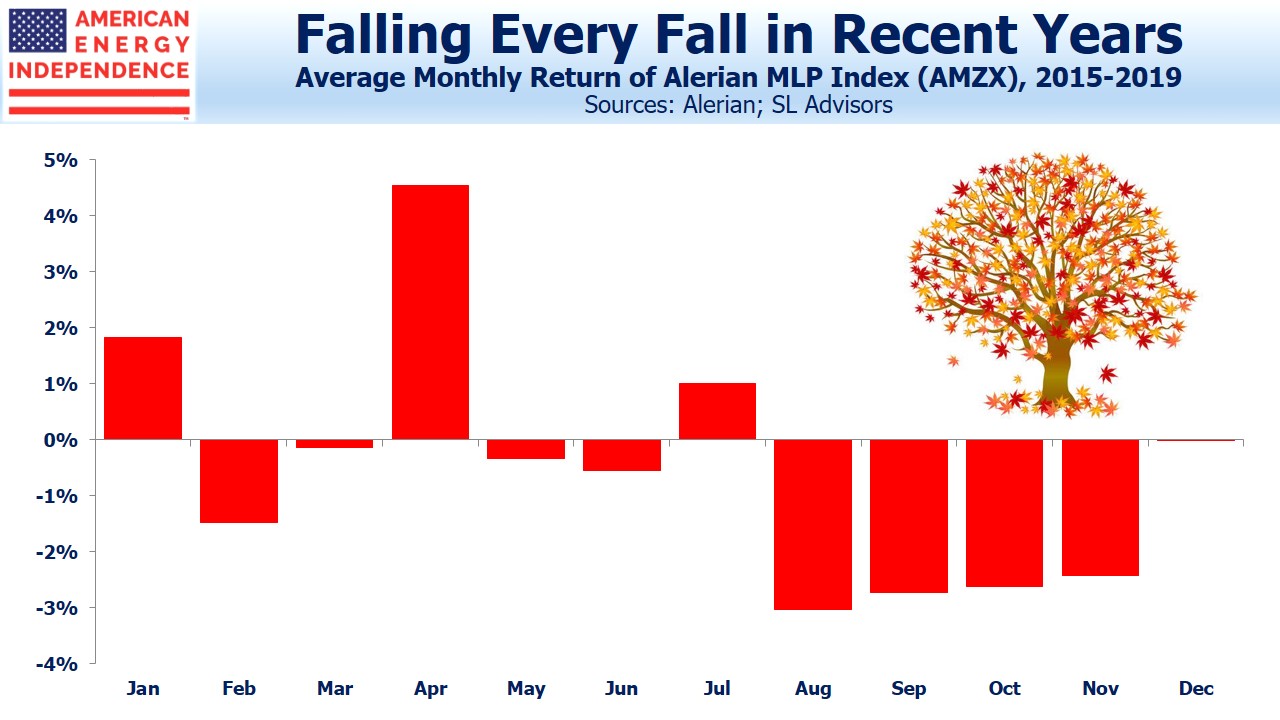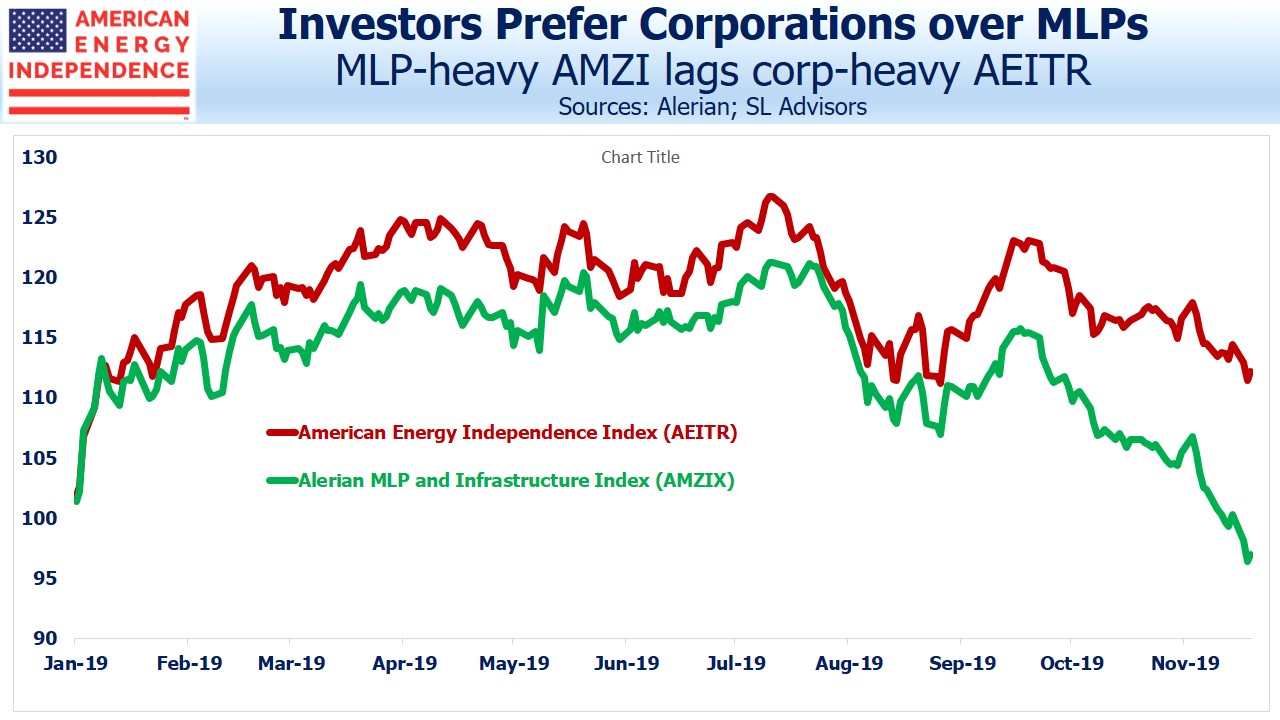MLPs Weak in November, As Usual
The Alerian MLP Index now has almost a 24 year history. Investors whose experience pre-dates the 2014 high will fondly recall many strong years. Since 1996 the compounded annual return is 11.3% including distributions, even though the AMZX remains 44% off its August 2014 high.
MLPs are a shrinking part of the midstream energy infrastructure sector, and the AMZX omits many of North America’s biggest pipeline companies, because they’re corporations not MLPs. Flows in MLPs and related funds are still dominated by retail investors, which is why the January effect has historically been more impactful than is generally the case for the S&P500.
The human tendency to take stock of one’s portfolio around year’s end is exacerbated by the impact of K-1s. Sell an MLP in December rather than January, and you’ll avoid a K-1 for that one month of the new year. Similarly, a purchase delayed from December to January avoids a K-1 for the last month of the prior year. Both these effects tend to lift prices in January versus December.
Tax loss selling is another feature that tends to weigh later in the year. U.S. equities are owned in large part by institutions that are often tax exempt, so tax planning has a more muted effect on the broader market.
Consequently, MLPs exhibit the seasonal pattern shown in the chart above. It may be some comfort for investors to be reminded that November is historically the best time to make investments in the sector. You’ll also note a smaller pattern around quarterly distributions, which generally fall in the middle of the quarter. Investors tend to avoid selling when a new distribution is imminent, so returns in the first month of the quarter are usually above average. It ought to make no difference at all – stock prices adjust for dividends paid when they go ex-dividend. Nonetheless, the pattern further suggests that sales made in the first month of the quarter will on average draw a higher price.
January stands out as a very strong month, returning three times the monthly average.
In recent years familiar patterns have been less reliable, including the tendency for MLPs to outperform the equity market (yes, they used to do that). The seasonals of the past five years reveal a very different pattern. As the sector has slumped, a clear trend has emerged of investors selling during the fourth quarter. The first half of the year has remained stronger than the second half, although oddly April has been better than January. Perhaps planned January purchases have been delayed because of prior weakness.
So far, October and November are continuing the pattern of 4Q weakness seen in recent years. We know anecdotally that tax loss selling has been a factor for some investors. It still looks to us as if a bounce in the early part of the new year remains likely. Sentiment is certainly consistent with current prices providing a near term low.
MLP seasonals remain interesting because of what they tell us about past retail investor behavior. Nonetheless, the MLP sector remains too small with too few well managed companies to justify a significant allocation. The American Energy Independence Index is 80% corporations with just a handful of MLPs. It’s +13% YTD compared with -5% for AMZX, starkly illustrating the preference investors have for pipeline corporations over MLPs, and the steady exit of retail investors from MLP-dominated products. Note that you cannot invest directly in an index.
We manage an ETF which seeks to track the American Energy Independence Index.
SL Advisors is the sub-advisor to the Catalyst MLP & Infrastructure Fund. To learn more about the Fund, please click here.


